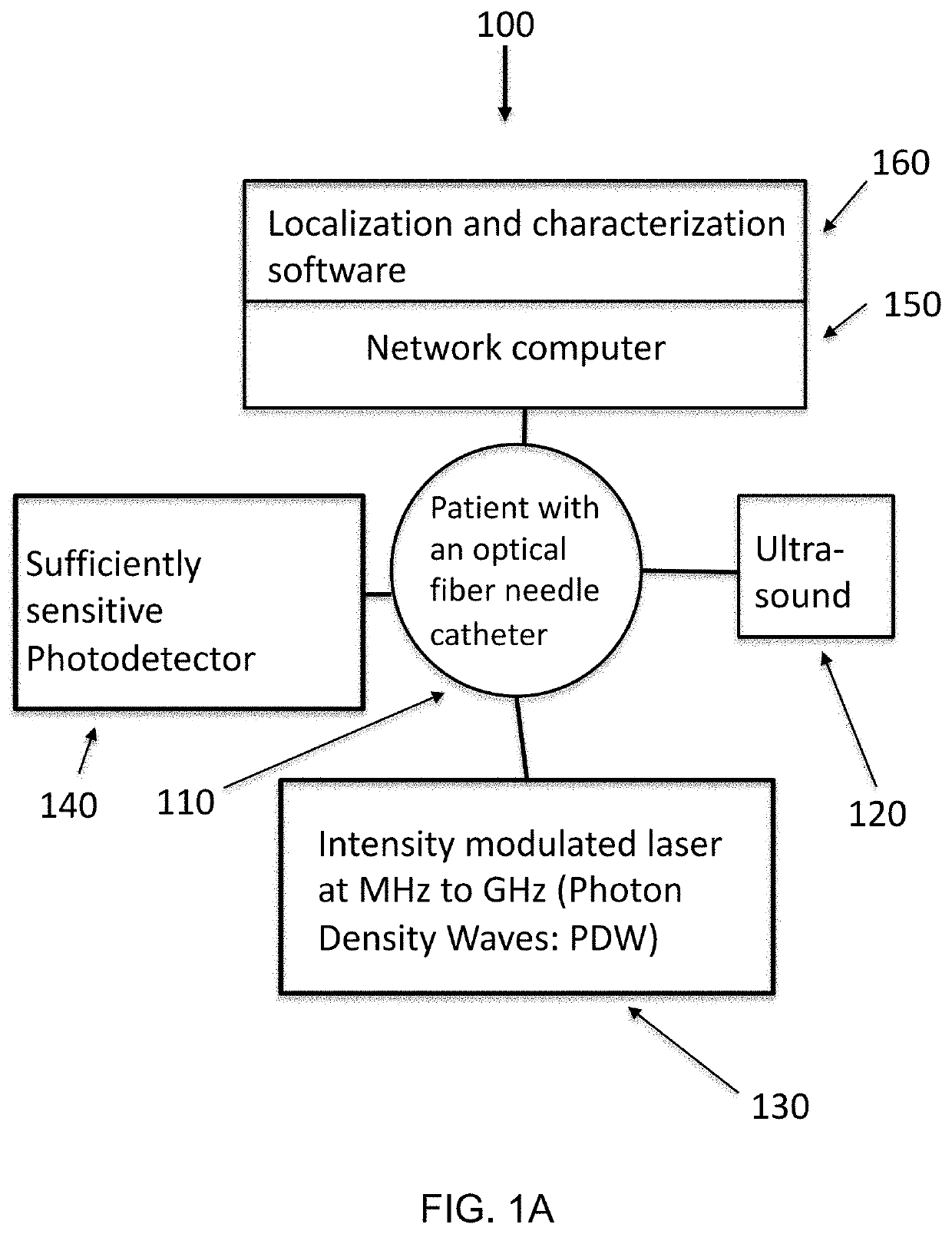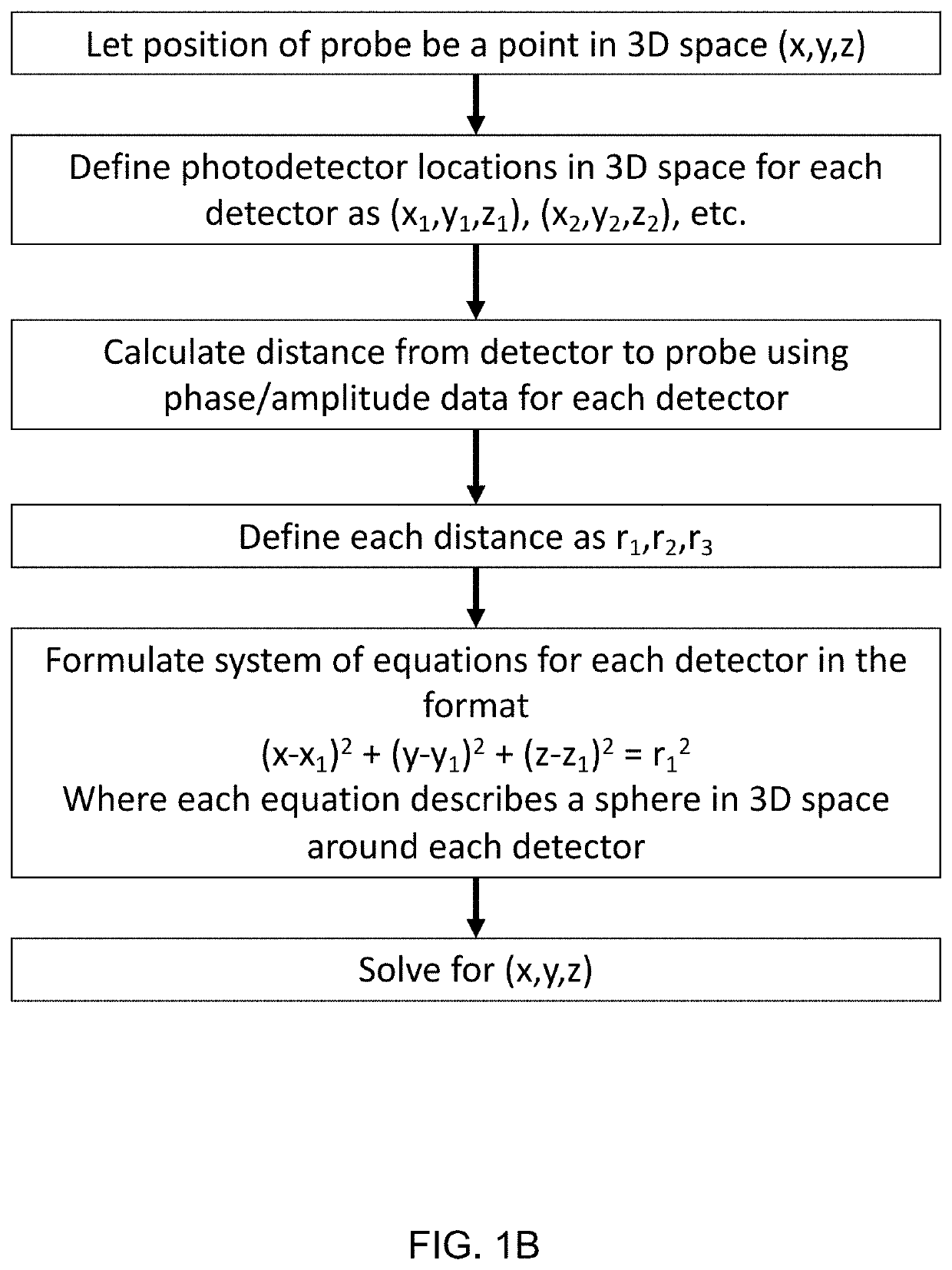Localization and characterization of subsurface structures using temporally-resolved photon density waves
a technology of photon density wave and subsurface structure, applied in medical science, surgery, diagnostics, etc., can solve the problems of difficult ultrasound technology for precise tracking and localization of thin needles buried in turbid tissues, difficult procedure, and persistent challenge of needles on ultrasound, so as to improve sensitivity and information content, the effect of greater precision and more safe operation
- Summary
- Abstract
- Description
- Claims
- Application Information
AI Technical Summary
Benefits of technology
Problems solved by technology
Method used
Image
Examples
example
[0042]The following is a non-limiting example of an optical method to track the position of a needle catheter inside of tissue. It is to be understood that said example is not intended to limit the invention in any way, and that equivalents or substitutes are within the scope of the invention.
[0043]Frequency domain photon migration (FDPM) is an optical technique that illuminates tissue with high-frequency (e.g. 50 MHz to 600 MHz) intensity-modulated near-infrared lasers and detects changes in the light scattered back from the tissue to determine tissue optical properties. When frequency domain detection is utilized, the amplitude (A) and phase shift (φ) of the detected light can be used to determine the position of a light source delivered inside the needle tip using a thin optical fiber. This is due to the fact that the phase shift (φ) of the intensity modulated light is linearly proportional to the distance (d) between the light source (i.e. the needle tip) and the detector, where...
PUM
 Login to View More
Login to View More Abstract
Description
Claims
Application Information
 Login to View More
Login to View More - R&D
- Intellectual Property
- Life Sciences
- Materials
- Tech Scout
- Unparalleled Data Quality
- Higher Quality Content
- 60% Fewer Hallucinations
Browse by: Latest US Patents, China's latest patents, Technical Efficacy Thesaurus, Application Domain, Technology Topic, Popular Technical Reports.
© 2025 PatSnap. All rights reserved.Legal|Privacy policy|Modern Slavery Act Transparency Statement|Sitemap|About US| Contact US: help@patsnap.com



